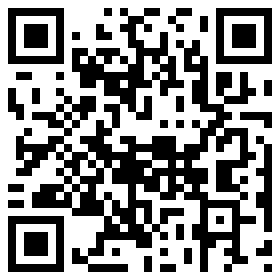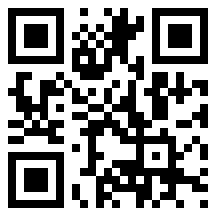I've just returned from a stint of edutourism in Morocco and Turkey, interspersed with two presentations at TESOL Arabia in Dubai, and I'm leaving shortly for Philadelphia where I'm due to give yet another presentation, followed by another in Sharjah April 3, and then a final one scheduled for Taichung in May, before I finish my teaching and take a break for the summer.
The talk in Taichung is a co-presentation with Aiden Yeh on "Thinking SMALL: Facilitating online teacher professional development" and is along the lines of a book chapter I had promised to produce last summer, before losing my previous job and finding myself up against a wall, which I've now managed to climb and scramble over. In the process of finding a way over that wall, the book chapter fell by the wayside.
As a part of that protracted scramble I took on a part-time teaching job with New York Institute of Technology in Abu Dhabi teaching research writing to expat and local UAE students at NYIT. I was given a syllabus to cover but was left to my own devices as to how I would realize it, so I created a wiki with links to online versions of all the course materials at http://fcwr101.pbworks.com/ and got students to submit their work primarily in Google Docs. When I finally got a full-time job with the Higher Colleges of Technology Abu Dhabi Men's College, CERT, I carried over what I had learned working with student writers at NYIT to my new posting teaching academic composition via yet another wiki, this time tailor-made for cadets at the UAE Naval College. Here I employed similar techniques as at NYIT, taking submissions in Google Docs and organizing the course with links to syllabus materials, screencast tutorials, and other course resources at another wiki made for that purpose, http://academiccomposition.pbworks.com/.
I felt more comfortable with constructing courses in this way than I did using Moodle (as I'd been doing in my previous teaching position at The Petroleum Institute, http://www.pimoodle.org/course/category.php?id=9, guest access allowed). My realization that a wiki-based environment could do much and more of what I had accomplished with Moodle led me to coin a concept I dubbed DIYLMS, do-it-yourself learning management systems. When I was invited to go to Marrakech as guest of the IATEFL Learning Technologies Special Interest Group (LT-SIG) and MATE (Moroccan Associate of Teachers of English) to give the keynote speech at a conference there, I suggested DIYLMS as a topic. This was fine with them, my talk was very well received, and I archived the event with recordings and other image artifacts at one of my Posterous blog spaces, since moved to http://advanceducation.blogspot.com.au/2013/04/learner-centered-do-it-yourself.html
Here are the slides from that keynote:
I had already written a rationale for the DIYLMS concept as a link from the course at NYIT http://fcwr101.pbworks.com/DIYLMS but I expanded this into its own wiki when I was asked to help with a pre-conference development course in Dubai the day before the official start of the 2012 TESOL Arabia Conference at the HCT Dubai Women's College. The professional development course was entitled "Online Teaching and Learning in TESOL", and I followed fellow-presenters Nicky Hockly and Justin Shewell to give my workshop on DIYLMS. True to form, I created a wiki as a portal for the workshop and gave a hands-on follow up to the rationale I'd laid down in Marrakech. The wiki portal is here: http://diylms.pbworks.com/ and the slides are below:
DIYLMS = Do it yourself Learning Management Systems, Part 2 the Workshop
View more PowerPoint from Vance Stevens
This event took place just before a deadline I was supposed to meet as editor of the On the Internet column in the TESL-EJ journal, so I drafted an article explaining the components of DIYLMS and posted it to its own blog which I'd created in case any participants wanted to subscribe and experience firsthand the particular affordances of Posterous as a tool in DIYLMS:
http://diylms.posterous.com/ (Posterous shut down at the end of April 2013; the post has since moved to http://advanceducation.blogspot.com.au/2013/04/learner-centered-do-it-yourself.html). All of this was meant to model for participants at the TESOL Arabia workshop how a DIYLMS might be constructed and convey something of its look and feel to those who participated in the workshop. The TESL-EJ version has since been published as:
Stevens, Vance. (2012). Learner-centered Do-it-yourself Learning Management Systems. TESL-EJ, Volume 15, Number 4, pp. 1-14: http://tesl-ej.org/pdf/ej60/int.pdf. Also at http://www.tesl-ej.org/wordpress/issues/volume15/ej60/ej60int/
Meanwhile I was invited to travel to Turkey as guest of Erzincan University to give seminars to their students and teachers March 13 and 14, 2012. Details were ironed out at the last minute, and I was not given adequate notice to prepare handouts for the students, so again I used the tried and true techniques of working from a wiki which I created for the occasion: http://erzincancalling.pbworks.com/. Again my intent was to teach through demonstrating and modeling how learning can accrue from appropriately configured use of social media-enabled Web 2.0 tools.
The workshop was a challenge because it was given to four dozen participants sitting at as many computers arranged in rows set perpendicular to the front of the room, so those in the back of the room were for all intents and purposes distance learners. I reached into my hat and pulled out one rabbit after another in an attempt to attract the students to spaces we could all cohabitate online. At some point, one of the brighter students asked the correct question; essentially, how does this all hang together and what does it have to do with learning English?
In answer to that I got the students to crowd-source sites they were using for learning English in TitanPad, one of the more robust Etherpad clones, and had just pasted their contributions into a Google Doc when the workshop abruptly ended with the students simultaneously exhibiting signs of not wanting to miss lunch, but not before they had almost all registered in the Google Doc I had just created for them as the next step in their interactive learning process.
I was at that point only midstream in where I was trying to take them but I realized I had a powerful tool in that they were all registered in this one Google Doc, so I registered their teachers there as well, and began imagining that this could potentially be just the start of an extended blended learning journey, if the students wanted to carry on where we'd left off through use of the tools I had just put in place for them.
Meanwhile one of my Facebook friends had been asking if anyone could contribute an article needed right away for a journal in Serbia, so I agreed to write up my observations as further explanation to the students and teachers in Erzincan of what we had started together, and I invited my Serbian colleagues to publish it if they wished. That writeup has been moved here: http://advanceducation.blogspot.com.au/2013/04/turning-3-hour-face-to-face-seminar.html
I'm due to trot all this out once again April 3rd at the 6th eLearning in Action conference at the Sharjah Higher Colleges of Technology: http://194.170.54.16/events/edtechpd2012/index.asp, which I hope to simulcast in Blackboard / Collaborate (Elluminate). If you can stand more, stay tuned :-)
I hope to add here links to that recording, as well as links to my TESL-EJ article and to the one for the Serbian journal, both of which I think should be published soon.
This event took place just before a deadline I was supposed to meet as editor of the On the Internet column in the TESL-EJ journal, so I drafted an article explaining the components of DIYLMS and posted it to its own blog which I'd created in case any participants wanted to subscribe and experience firsthand the particular affordances of Posterous as a tool in DIYLMS:
http://diylms.posterous.com/ (Posterous shut down at the end of April 2013; the post has since moved to http://advanceducation.blogspot.com.au/2013/04/learner-centered-do-it-yourself.html). All of this was meant to model for participants at the TESOL Arabia workshop how a DIYLMS might be constructed and convey something of its look and feel to those who participated in the workshop. The TESL-EJ version has since been published as:
Stevens, Vance. (2012). Learner-centered Do-it-yourself Learning Management Systems. TESL-EJ, Volume 15, Number 4, pp. 1-14: http://tesl-ej.org/pdf/ej60/int.pdf. Also at http://www.tesl-ej.org/wordpress/issues/volume15/ej60/ej60int/
Meanwhile I was invited to travel to Turkey as guest of Erzincan University to give seminars to their students and teachers March 13 and 14, 2012. Details were ironed out at the last minute, and I was not given adequate notice to prepare handouts for the students, so again I used the tried and true techniques of working from a wiki which I created for the occasion: http://erzincancalling.pbworks.com/. Again my intent was to teach through demonstrating and modeling how learning can accrue from appropriately configured use of social media-enabled Web 2.0 tools.
The workshop was a challenge because it was given to four dozen participants sitting at as many computers arranged in rows set perpendicular to the front of the room, so those in the back of the room were for all intents and purposes distance learners. I reached into my hat and pulled out one rabbit after another in an attempt to attract the students to spaces we could all cohabitate online. At some point, one of the brighter students asked the correct question; essentially, how does this all hang together and what does it have to do with learning English?
In answer to that I got the students to crowd-source sites they were using for learning English in TitanPad, one of the more robust Etherpad clones, and had just pasted their contributions into a Google Doc when the workshop abruptly ended with the students simultaneously exhibiting signs of not wanting to miss lunch, but not before they had almost all registered in the Google Doc I had just created for them as the next step in their interactive learning process.
I was at that point only midstream in where I was trying to take them but I realized I had a powerful tool in that they were all registered in this one Google Doc, so I registered their teachers there as well, and began imagining that this could potentially be just the start of an extended blended learning journey, if the students wanted to carry on where we'd left off through use of the tools I had just put in place for them.
Meanwhile one of my Facebook friends had been asking if anyone could contribute an article needed right away for a journal in Serbia, so I agreed to write up my observations as further explanation to the students and teachers in Erzincan of what we had started together, and I invited my Serbian colleagues to publish it if they wished. That writeup has been moved here: http://advanceducation.blogspot.com.au/2013/04/turning-3-hour-face-to-face-seminar.html
I'm due to trot all this out once again April 3rd at the 6th eLearning in Action conference at the Sharjah Higher Colleges of Technology: http://194.170.54.16/events/edtechpd2012/index.asp, which I hope to simulcast in Blackboard / Collaborate (Elluminate). If you can stand more, stay tuned :-)
I hope to add here links to that recording, as well as links to my TESL-EJ article and to the one for the Serbian journal, both of which I think should be published soon.











 Tag in your DEL.ICIO.US account
Tag in your DEL.ICIO.US account










